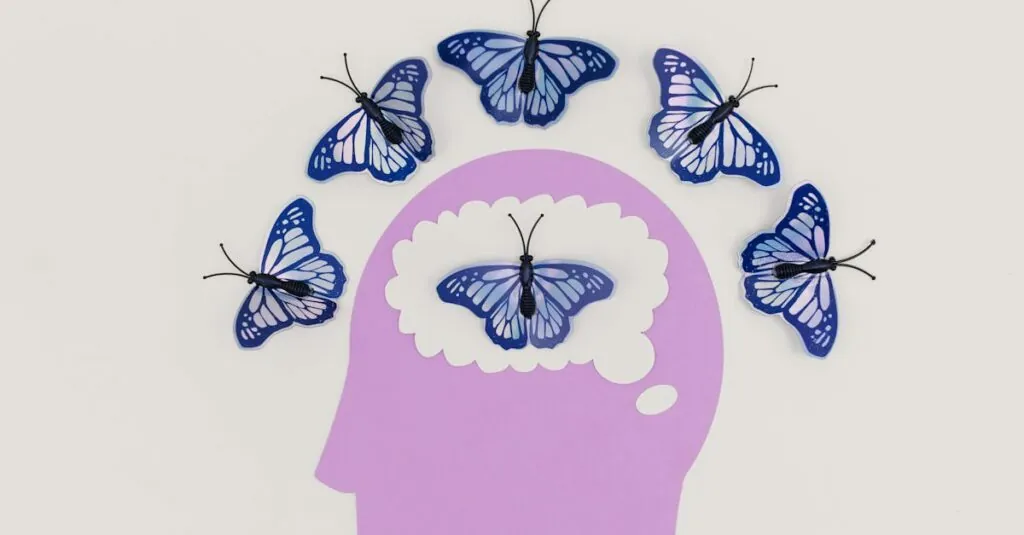Table of Contents
ToggleFreedom isn’t just a word; it’s a state of mind that can make even the most mundane Mondays feel like a tropical getaway. Imagine waking up with a sense of limitless possibilities, where the only thing holding you back is your snooze button. For many, the quest for freedom shapes their daily lives, sparking dreams of adventure and self-discovery.
Overview of “Freedom On My Mind”
The concept of “Freedom On My Mind” embodies a profound understanding of personal autonomy. It signifies an internal state that fosters growth and creativity. Engaging with this mindset allows individuals to reimagine their realities.
In daily life, embracing freedom can transform mundane tasks into fulfilling experiences. This commitment to freedom inspires moments of spontaneity in personal exploration. People often find that dreaming is a crucial aspect of pursuing their aspirations.
A growing body of literature discusses the impact of freedom on mental health and well-being. Studies show a direct correlation between freedom and happiness, reinforcing the idea that a liberated mindset enhances quality of life.
Connecting freedom to self-discovery showcases the importance of self-actualization. Individuals frequently embark on quests for knowledge that lead to deeper insights about themselves and the world. By nurturing this mindset, one often creates paths toward adventure and fulfillment.
“Freedom On My Mind” encourages active participation in shaping one’s destiny. Promoting autonomy fosters resilience and empowers others to challenge societal norms. Engaging in this dialogue pushes boundaries and encourages a collective movement towards a more liberated existence.
The implications of this mindset extend beyond personal fulfillment; they can drive social change as well. Active involvement can unite communities in shared aspirations for equality and justice. Hence, cultivating this mindset serves as both a personal journey and a broader societal endeavor.
Themes Explored in the Film
The film delves into significant themes that resonate with the quest for freedom. In particular, its portrayal of civil rights struggles highlights the perseverance and courage displayed by activists during pivotal moments in history.
Struggles for Civil Rights
Struggles for civil rights emerge as a central focus in the film. Activists fight against systemic injustice, embodying resilience and determination. Narratives showcase events such as protests and sit-ins, illustrating the collective efforts to challenge oppressive systems. Individual stories reveal personal sacrifices made for a greater purpose, emphasizing the necessity of solidarity in the pursuit of equality. Historical references connect past transgressions to contemporary challenges, reinforcing the ongoing relevance of the civil rights movement. Emotional depictions resonate with audiences, emphasizing the human cost of liberty and the vital need for continuous advocacy.
Impact of Activism
Activism’s impact plays a crucial role throughout the film. Through organized movements, communities engage in dialogues that shift societal perceptions. The portrayal of influential figures illustrates the power of leadership in mobilizing support. Grassroots campaigns demonstrate how ordinary individuals can spearhead transformative change. Collaboration within diverse groups emphasizes unity amid adversity. This theme underlines the necessity of active participation in shaping societal norms. Community-driven initiatives foster empowerment, driving progress toward justice and equality, and spotlight the undeniable connection between activism and the success of civil rights advancements.
Key Characters and Their Roles
The exploration of freedom involves various key characters and their impactful stories. Each individual contributes to the broader narrative of liberation, showcasing diverse perspectives.
Interviews and Personal Stories
Interviews with activists reveal powerful personal stories of struggle. They highlight dreams of equality through their experiences in movements. Narratives of perseverance emerge from these conversations, emphasizing the human cost of fighting for freedom. Many recount pivotal moments that shaped their journey. Each story underscores the relentless pursuit of justice. These accounts foster empathy, allowing audiences to connect with shared experiences of determination and resilience.
Historical Context
Historical events frame the quest for freedom within a larger societal framework. Significant milestones, such as landmark legislation and social protests, mark turning points in civil rights movements. Each event cultivates a deeper understanding of the systemic issues faced by marginalized communities. The connections between past struggles and present-day challenges become evident through this context. Recognizing these links emphasizes the ongoing fight for equality. Awareness of historical figures, along with their contributions, enriches the narrative of liberation.
Cinematic Techniques
Cinematic techniques play a vital role in conveying the themes of freedom and struggle in film. They enhance storytelling and evoke emotions, creating a powerful connection between the audience and the narrative.
Visual Storytelling
Visual storytelling uses images and colors to represent emotions and ideas. Cinematography captures the intensity of protests, highlighting the determination of activists. Framing emphasizes individual experiences within collective movements, allowing viewers to relate on a personal level. Symbolic imagery, like broken chains or open skies, illustrates the quest for liberation. Through these techniques, filmmakers create a language that resonates deeply with the audience, reinforcing the message of freedom.
Use of Archival Footage
Archival footage offers authentic glimpses into historical events. Filmmakers incorporate this material to ground their narratives in reality. These visuals serve as evidence of past struggles for equality and justice. By showcasing documentary clips of protests and speeches, audiences connect the present to the past. Contextualizing contemporary themes within historical footage enhances the film’s impact, reminding viewers of the ongoing quest for freedom. This technique effectively bridges generational gaps, making the message more immediate and relevant.
Cultural Impact and Reception
Cultural responses to “Freedom On My Mind” highlight its significance across various communities. Audiences relate deeply to the themes of autonomy and resilience presented in the film. Many viewers resonate with personal stories, feeling a connection to the struggles depicted. The portrayal of civil rights activism evokes a powerful sense of historical relevance, engaging people in conversations about equality.
Social media discussions often reflect on the film’s ability to inspire movements. Activists and community leaders cite this work as a catalyst for dialogue about systemic injustices. Engagement in these discussions fosters a collective understanding of ongoing challenges faced in the pursuit of freedom. Institutions and educators also recognize the film’s educational value, using it as a resource for discussing civil rights history and activism.
Critical reception emphasizes the film’s effective use of cinematic techniques. Cinematography that captures raw emotions enhances the overall storytelling. Symbolic imagery often resonates with audiences, reinforcing their emotional connections to the narrative. Archivist contributions provide authenticity, allowing viewers to bridge past and present contexts.
Additionally, the film’s impact extends to artistic interpretations, inspiring artists and musicians. This inspiration manifests in works that reflect themes of liberation, forging new connections in creative expression. Festivals and screenings create platforms for community engagement and reflection, amplifying the film’s reach. Overall, cultural impact and reception illustrate how “Freedom On My Mind” serves as a vital force for dialogue, education, and inspiration in societal movements.
The exploration of “Freedom On My Mind” reveals a powerful narrative that transcends individual experiences to touch on broader societal themes. It emphasizes the vital role of personal autonomy in fostering resilience and creativity. As individuals embrace this mindset they not only enhance their own lives but also contribute to collective movements advocating for justice and equality.
The film’s cultural impact highlights its ability to inspire dialogue and action among diverse communities. By connecting historical struggles to contemporary challenges it reinforces the ongoing relevance of the fight for freedom. Ultimately the journey toward liberation is both a personal and communal endeavor that encourages everyone to participate actively in shaping a more equitable future.







